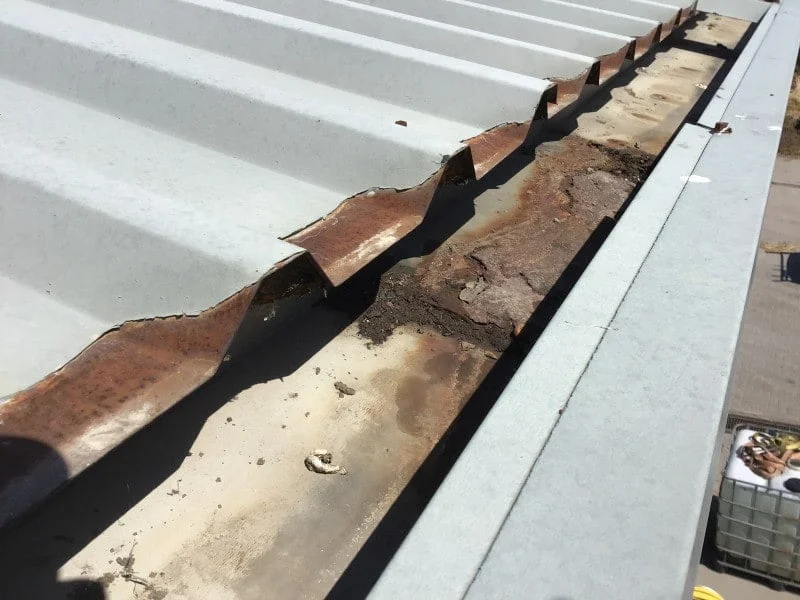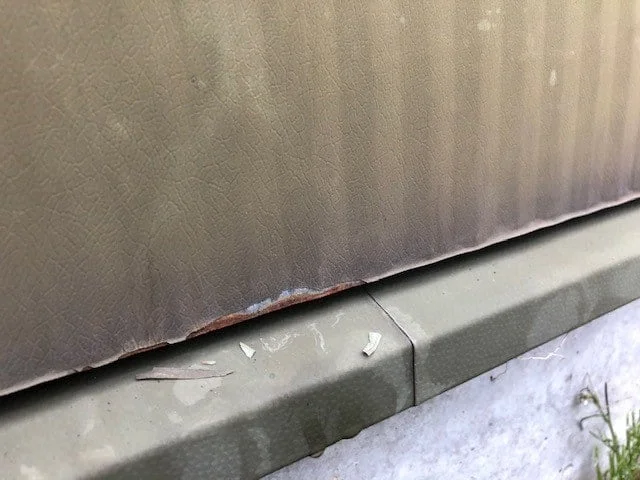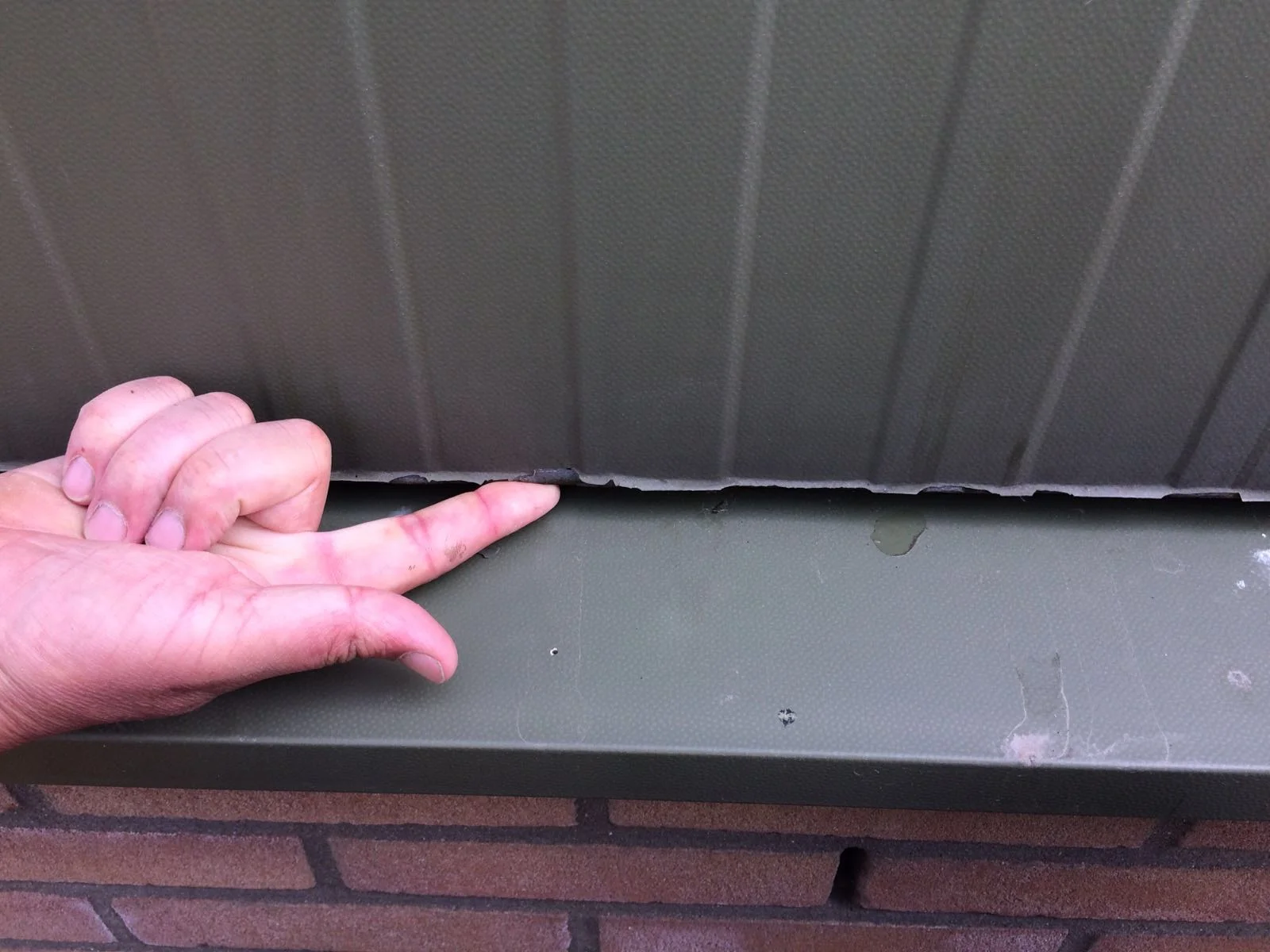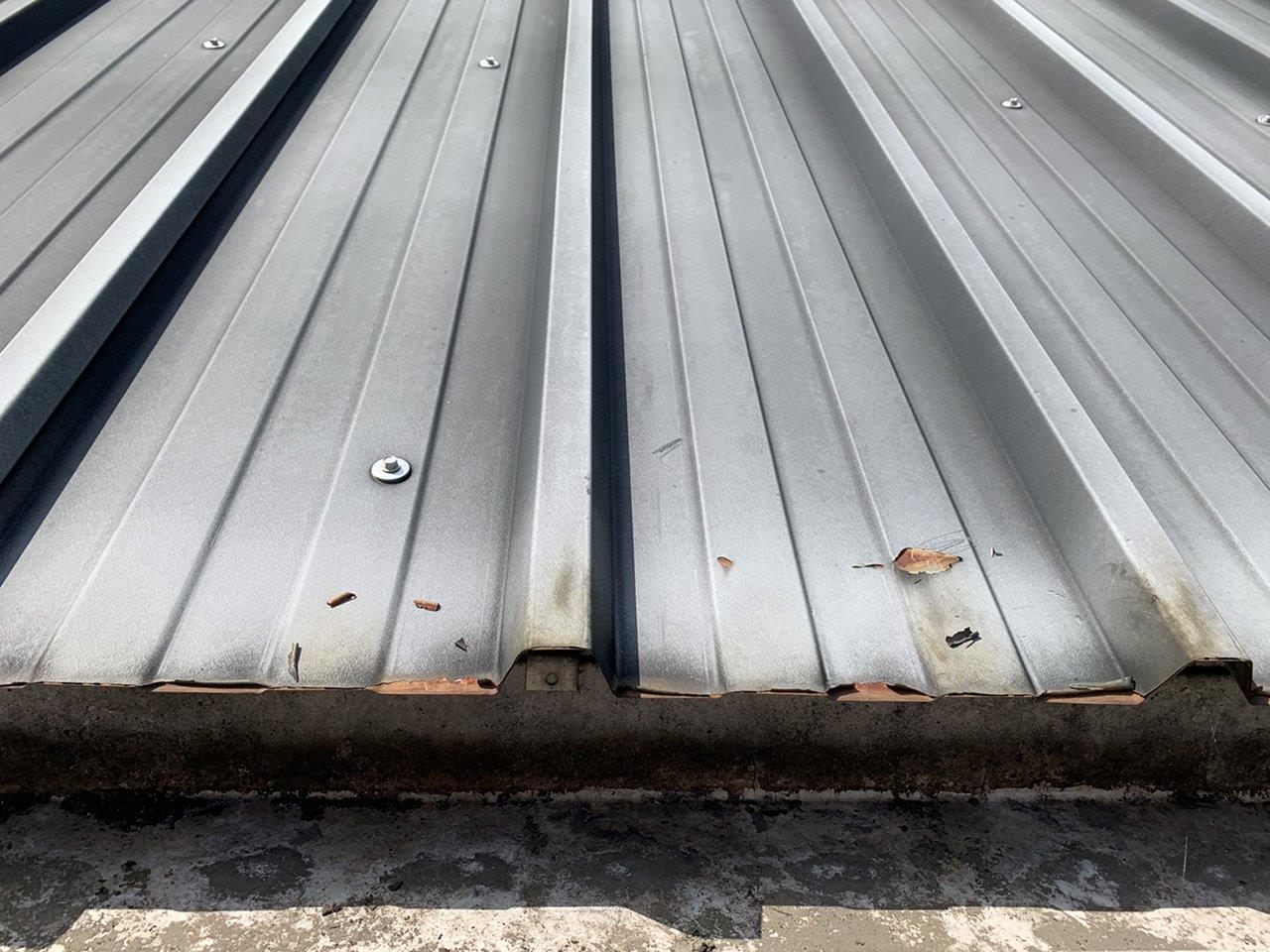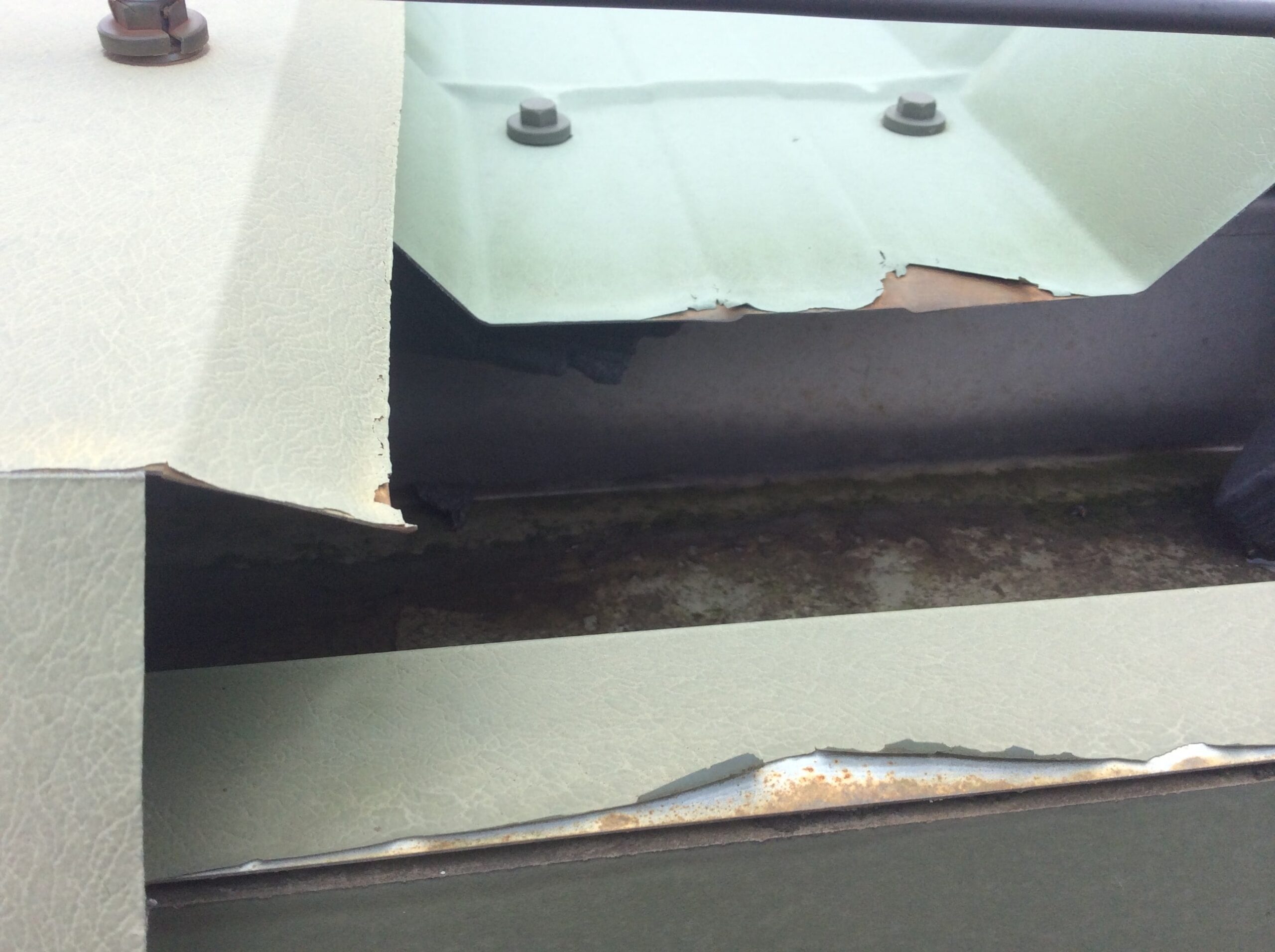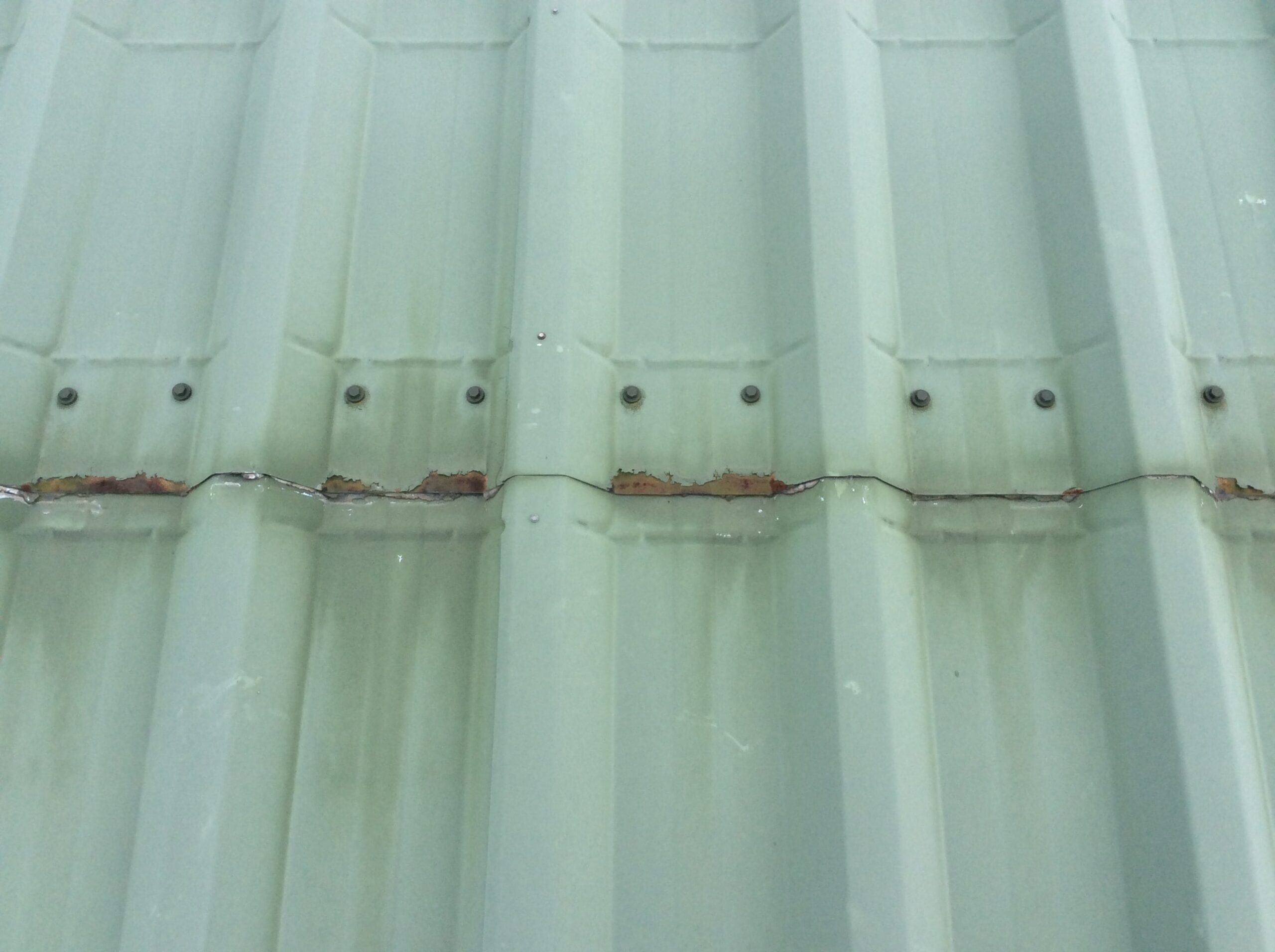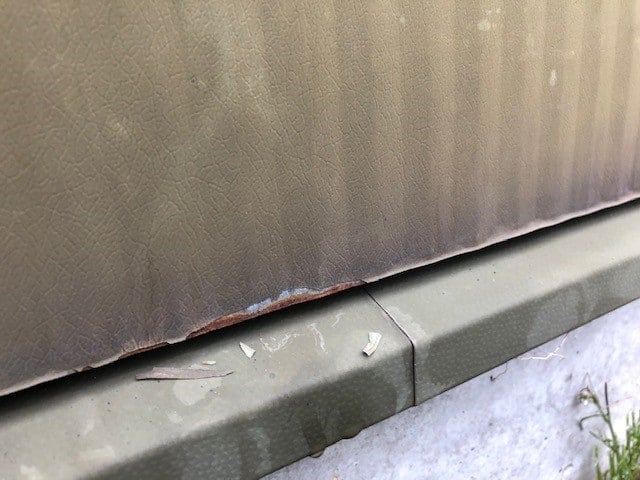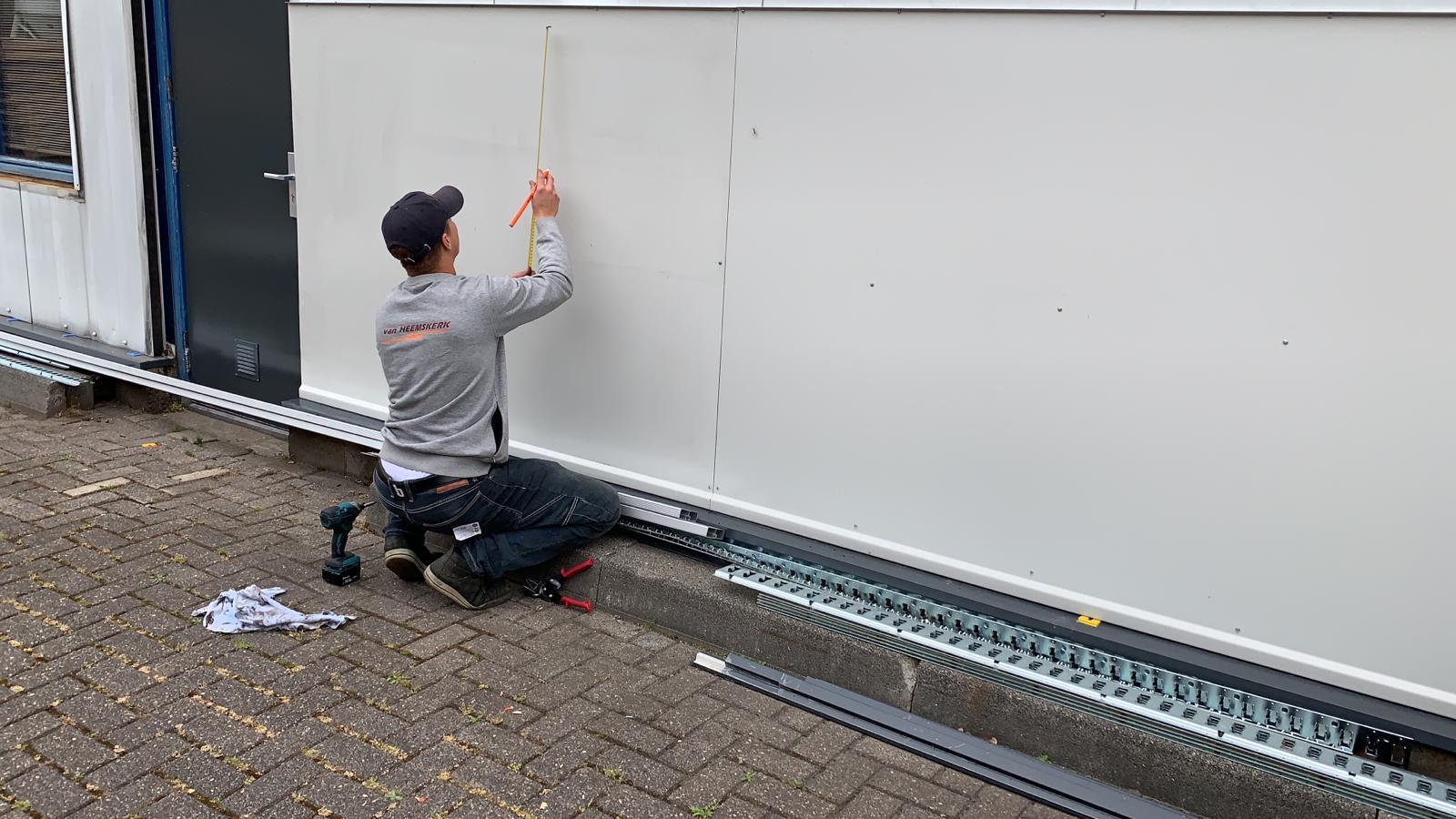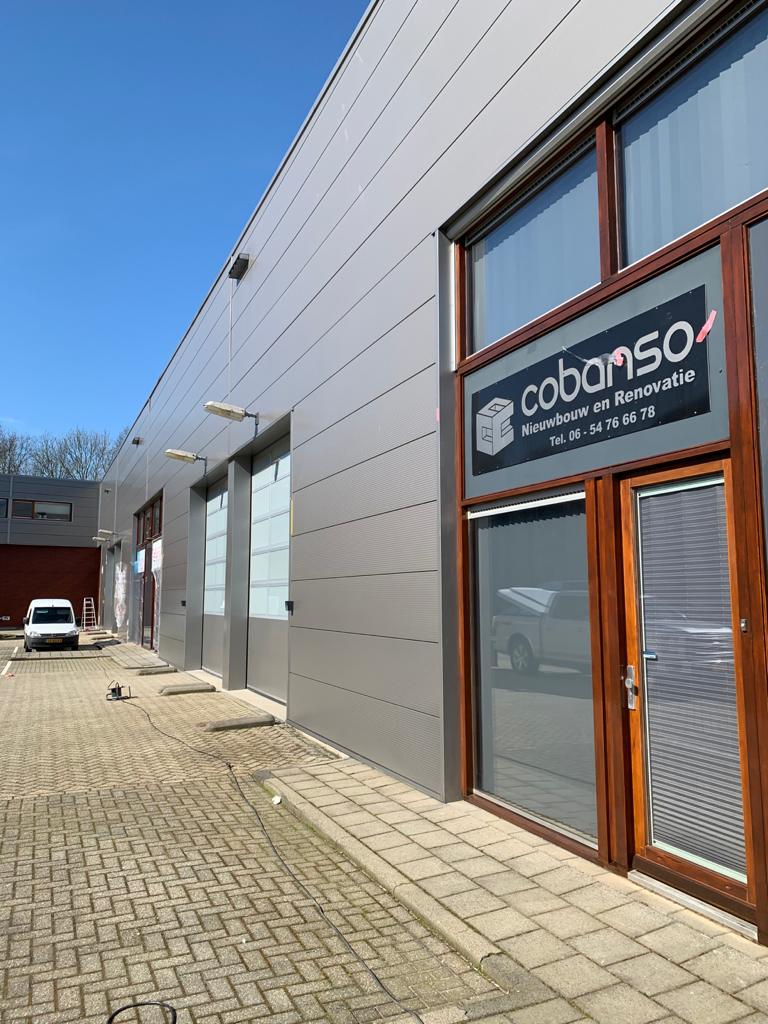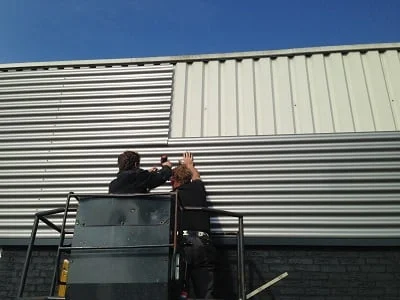Rust Repair and Edge Peeling
Rust formation at the ends of roof and facade panels is common in commercial buildings. This is also known as edge peeling. It occurs on all types of coating systems, but most often on Plastisol coatings, particularly on older systems. It is often visible on the ends or seams of cladding, as these areas suffer the most from moisture and contamination.
This can lead to the formation of rust, both at the ends and under the coating. As a result, the coating gradually becomes loose. If no action is taken, the panels will be increasingly affected. Van Heemskerk has developed an effective method to prevent and repair edge peeling. For this, we treat the rust and loose parts on-site using machinery. We then apply a strong zinc-rich rust-inhibiting coating to the treated areas. The roof panels of your building will then be protected for years against the effects of dirt and UV radiation.
Van Heemskerk is also engaged and recommended by panel manufacturers and suppliers to resolve edge peeling. Would you like to know more about preventing and repairing rust formation and edge peeling? Then feel free to contact us!

